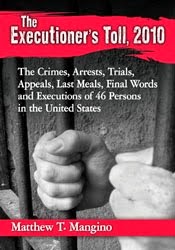A lot of sins have been committed in the name of “broken windows,” wrote George Kelling in
Politico. That is the name Kelling and the late criminologist James Q. Wilson gave to a new theory of policing more than 30 years ago—it was the title of an essay they published in in the
Atlantic in 1982—in which they argued that small things matter in a community and, if nothing is done about them, they can lead to worse things.
Kelling wrote, we expressed this in a metaphor: Just as a broken window left untended in a building is a sign that nobody cares, leading typically to more broken windows—more damage—so disorderly conditions and behaviors left untended in a community are signs that nobody cares and lead to fear of crime, more serious crime, and urban decay.
Today, with the highly publicized deaths of a number of African-Americans at the hands of white police officers over the past year, so-called broken-windows policing has come under attack by activists and academics alike. Such police acts as stopping Michael Brown for jaywalking in Ferguson, Mo., and confronting Eric Garner for selling loose cigarettes in New York, are said to be examples of broken-windows policing run amok. Some have argued that this approach to policing might have been appropriate in the days of high crime during the 1970s and 1980s, but is no longer relevant since crime rates have declined. Others claim that broken windows is responsible for the high rate of incarceration. Others yet say that broken windows does not prevent crime.
Despite these and other criticisms, the demand for order remains high in minority and poor communities. And I would argue that our theory has been largely misunderstood. First of all,
broken windows was never intended to be a high-arrest program. Although it has been practiced as such in many cities, neither Wilson nor I ever conceived of it in those terms. Broken-windows policing is a highly discretionary set of activities that seeks the least intrusive means of solving a problem—whether that problem is street prostitution, drug dealing in a park, graffiti, abandoned buildings, or actions such as public drunkenness. Moreover, depending on the problem, good broken windows policing seeks partners to address it: social workers, city code enforcers, business improvement district staff, teachers, medical personnel, clergy, and others. The goal is to reduce the level of disorder in public spaces so that citizens feel safe, are able to use them, and businesses thrive. Arrest of an offender is supposed to be a last resort—not the first.
Some background, perhaps, will help clarify these issues. When Wilson and I agreed in late 1981 to co-author an article in the
Atlantic, we knew then that it would stir up controversy. Wilson, a conservative political scientist, had already aroused hostility from the largely liberal criminological establishment with his 1975 book,
Thinking About Crime, which challenged the criminological truism that crime could only be prevented by dealing with its “root causes.” I had attracted negative responses as well from the police establishment in 1974 when colleagues and I published the
Kansas City Preventive Patrol Experiment, which largely invalidated the accepted and entrenched police tactic of random patrol of city streets by police in cars. More than this, each of us was familiar with the dismal history of police and African Americans in the United States—of police complicity in the maintenance of slavery, the Black Codes, Jim Crow in the South, and
de facto segregation in the North. Given the subject of our article, the Black Codes—vague loitering and vagrancy laws passed in the South immediately after the Civil War—were of special concern for us. Under these laws police arrested African Americans for minor offenses and, when they could not pay the fines, courts committed them to involuntary labor on farms—in a sense, extending slavery for many into the 20th century.
Against this backdrop, Wilson and I were arguing for something else: simply doing a better job of maintaining order. In some respects what we wrote was nothing new: maintaining order is an ancient police function. Yet by this time American police had backed away from order maintenance in the name of concentrating on “serious” crimes. Wilson and I urged police to reconsider.
I cannot speak for Jim, who died in 2012 at the age of 80, but my own views about the importance of maintaining order grew out of my research on police foot patrol and meeting with African American citizens in tough areas of cities like Newark, Boston, NYC, Chicago, and others. Starting in the early 1970s, in churches, social centers, living rooms, and walking the streets, I listened to citizens talk about their problems and demand action. If you asked them to list their five greatest concerns, at least three, but more likely four, would be “minor problems:” graffiti, youths drinking in parks, “homeless” peeing on their stoops, prostitutes attempting to hustle fathers in front of their children, “johns” hustling their teen age daughters, abandoned homes, unkempt properties, and so on. These complaints came not from white suburban or middle class areas, but from poor residents, usually minorities, in the heart of inner cities.
Why then has broken windows policing re-emerged as the target not only of academics but activists during the second decade of the 21st century? In part, police themselves have not always applied a broken-windows approach in a manner in which it is most effective as a crime prevention and control technique, while compatible with and responsive to community goals and desires. Both are crucial to good broken-windows policing—which by its nature depends upon the exercise of seasoned discretion and wise judgment by trained police officers familiar with and sensitive to the local community. At the same time, many critics of order maintenance by police fail to understand either the fundamental theory behind its use, or actual positive outcomes that have been documented in its application in numerous cities across the country—outcomes that make it a police tactic worth pursuing.
To read more
CLICK HERE







